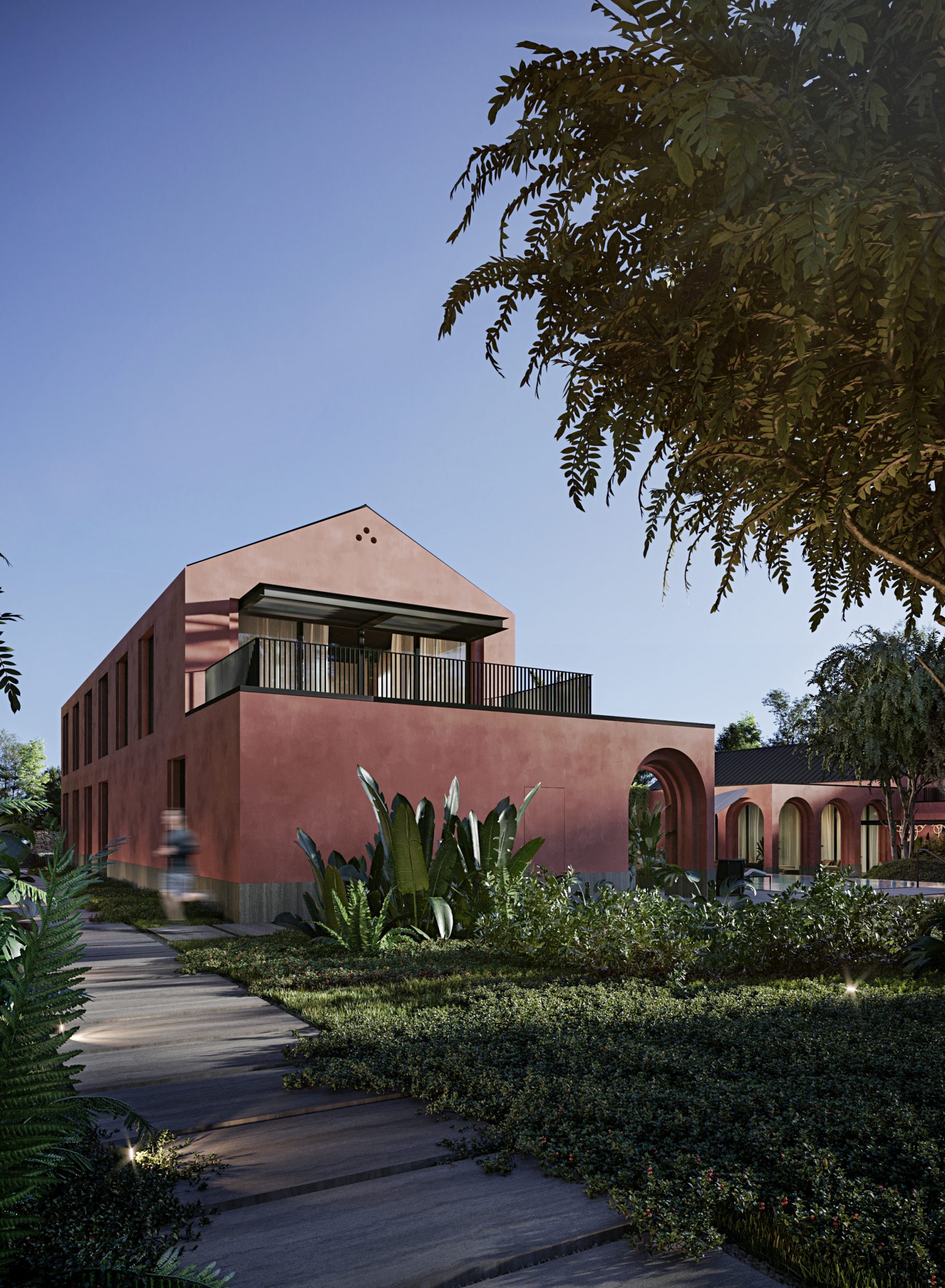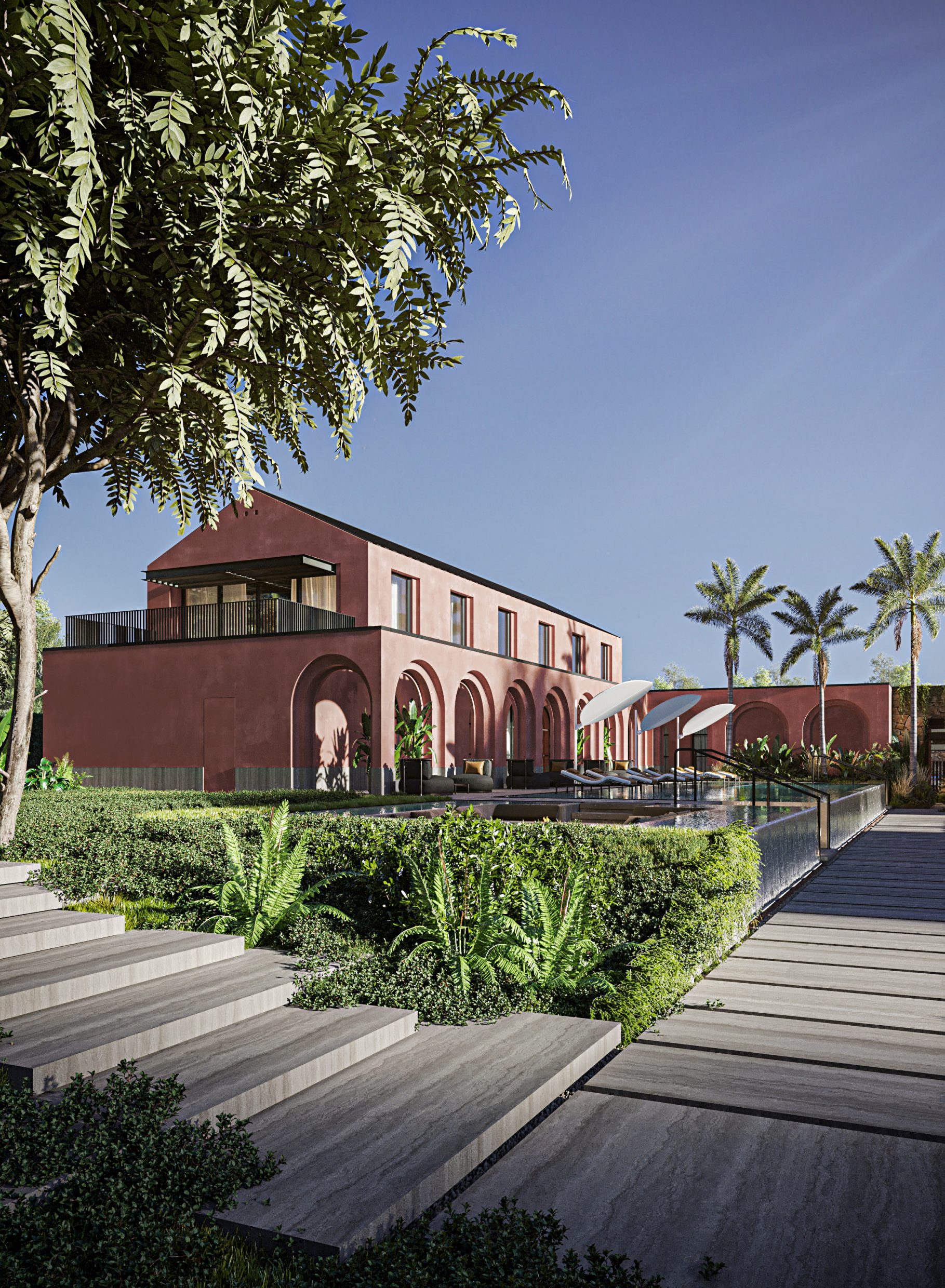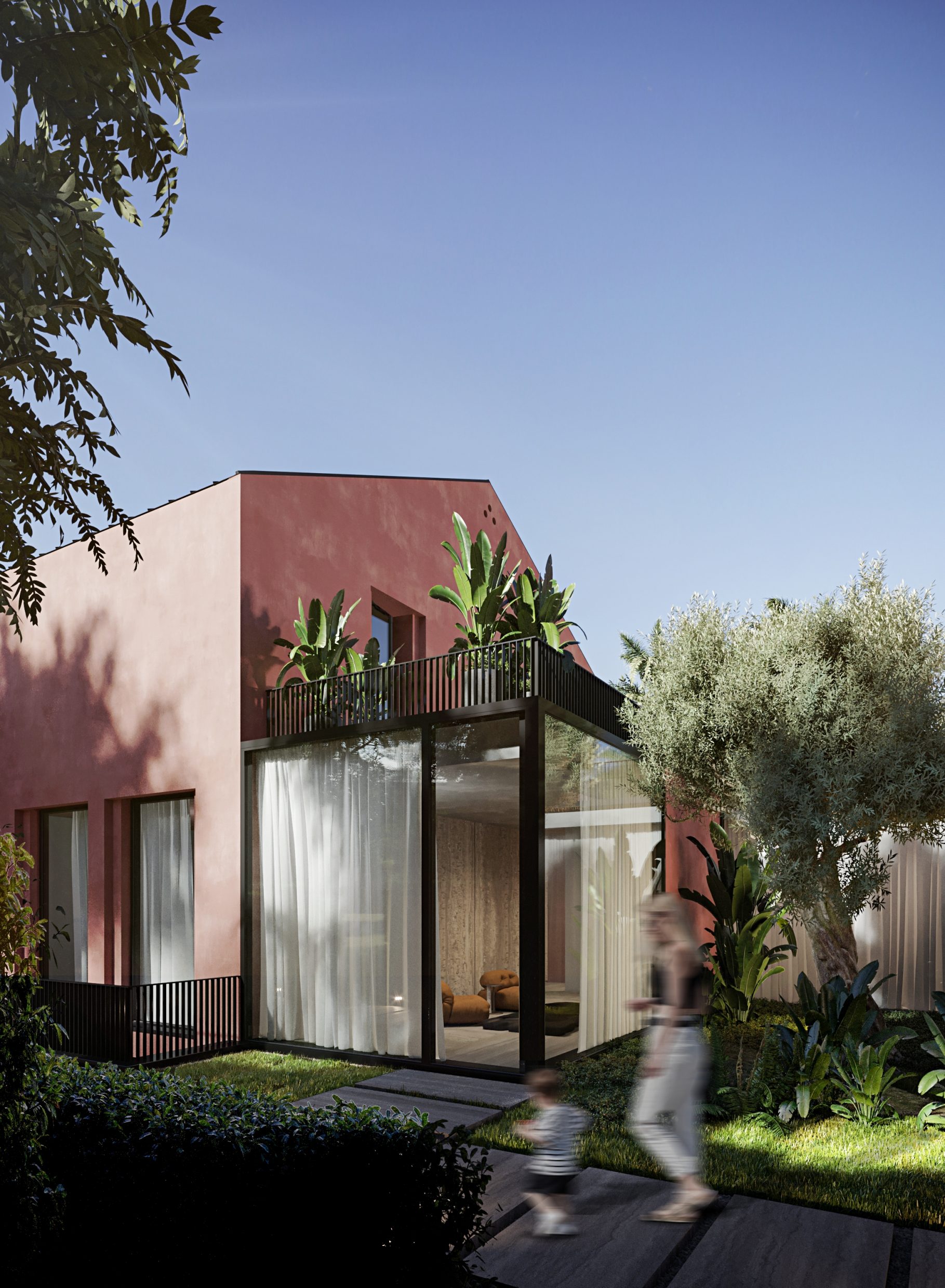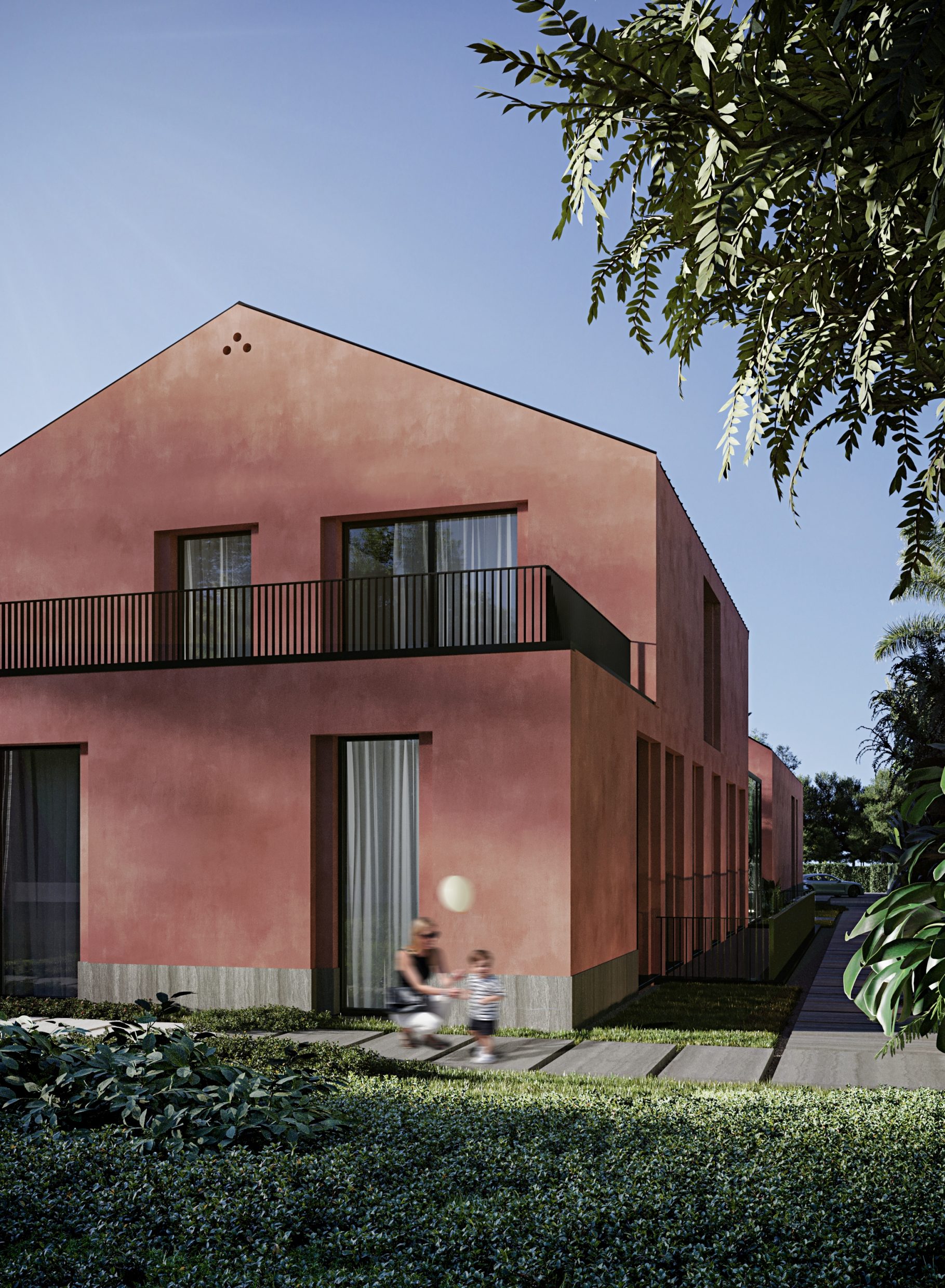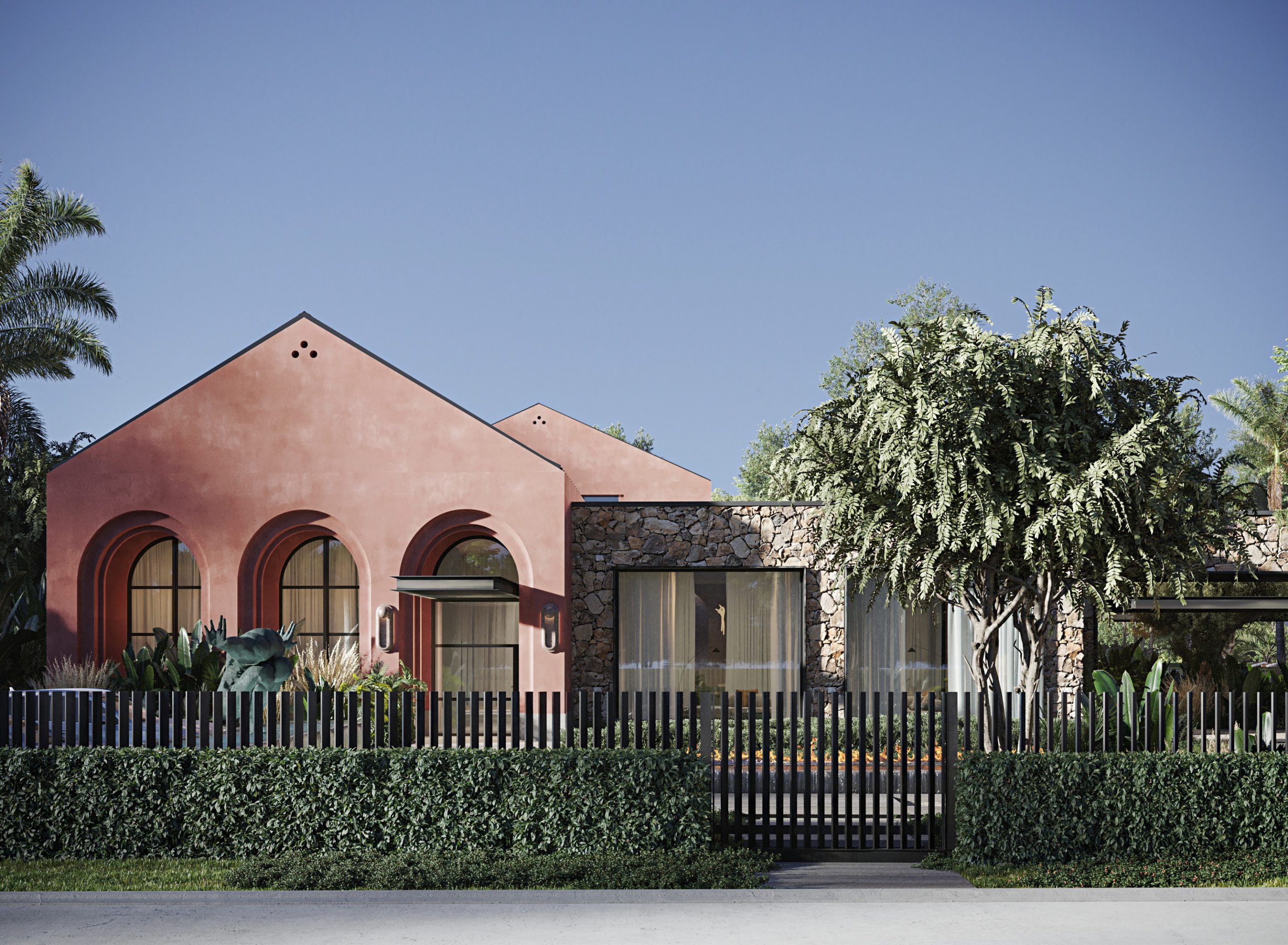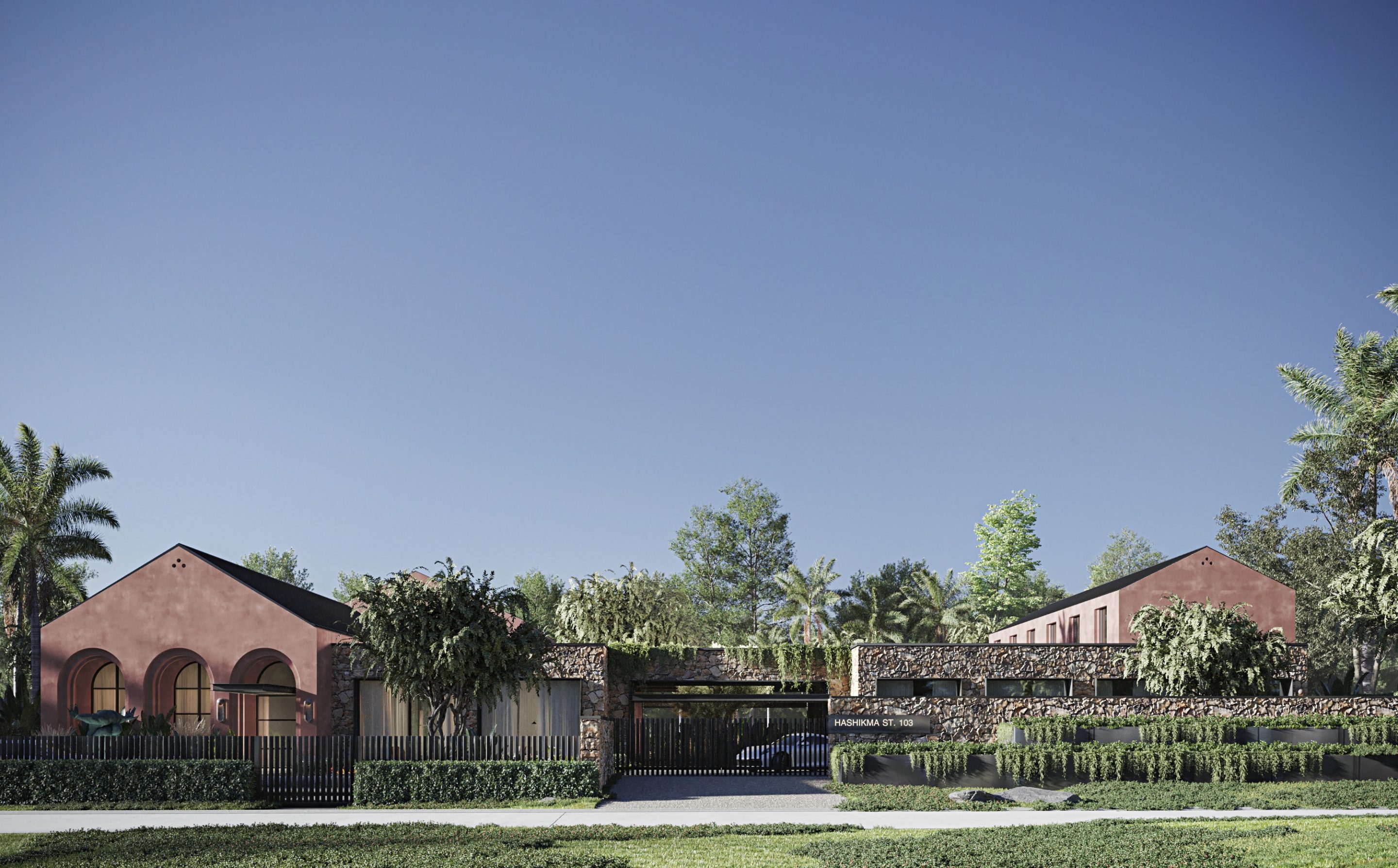Brief
The YODEZEEN team was given a challenging task of designing a residence in the Mediterranean style that embodies bold and daring decisions. The client desires a home that stands out from the traditional modern design, incorporating unique and innovative elements while still maintaining the essence of the region's charm. The team was encouraged to think outside the box, pushing the boundaries of design to create a distinctive and captivating residential masterpiece.
Location:
Square meters:
Date:
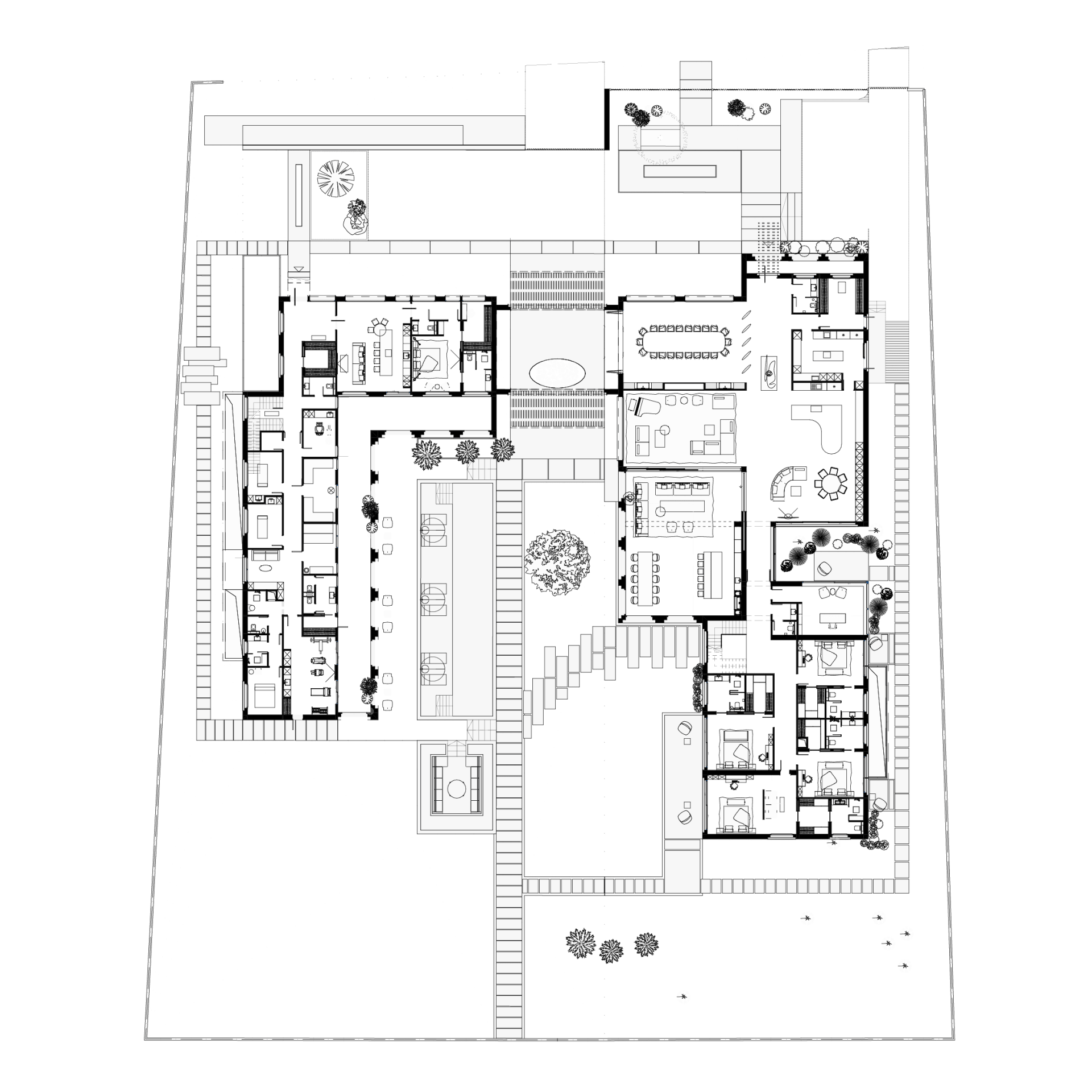
Layout
The residential project consists of a main house and a guest house, interconnected by a single-story portal constructed with masonry stone. The courtyard features a contemporary colonnade with traditional elements, along with a swimming pool and a captivating firepit. In the main house, a charming patio awaits, offering delightful views from the kitchen and office area. Additionally, a BBQ terrace is seamlessly accessible from the living room and kitchen, providing a perfect space for outdoor entertaining.
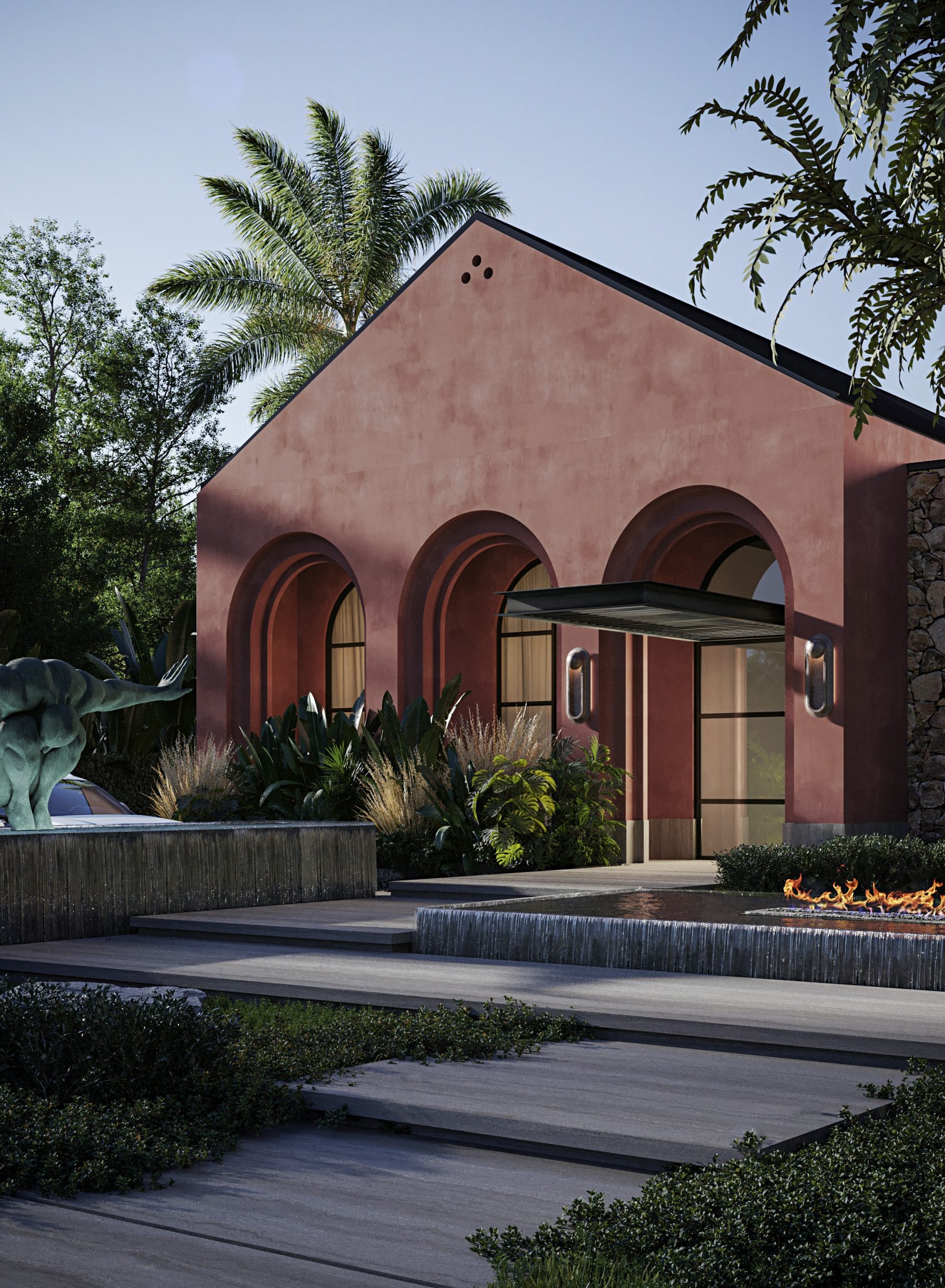
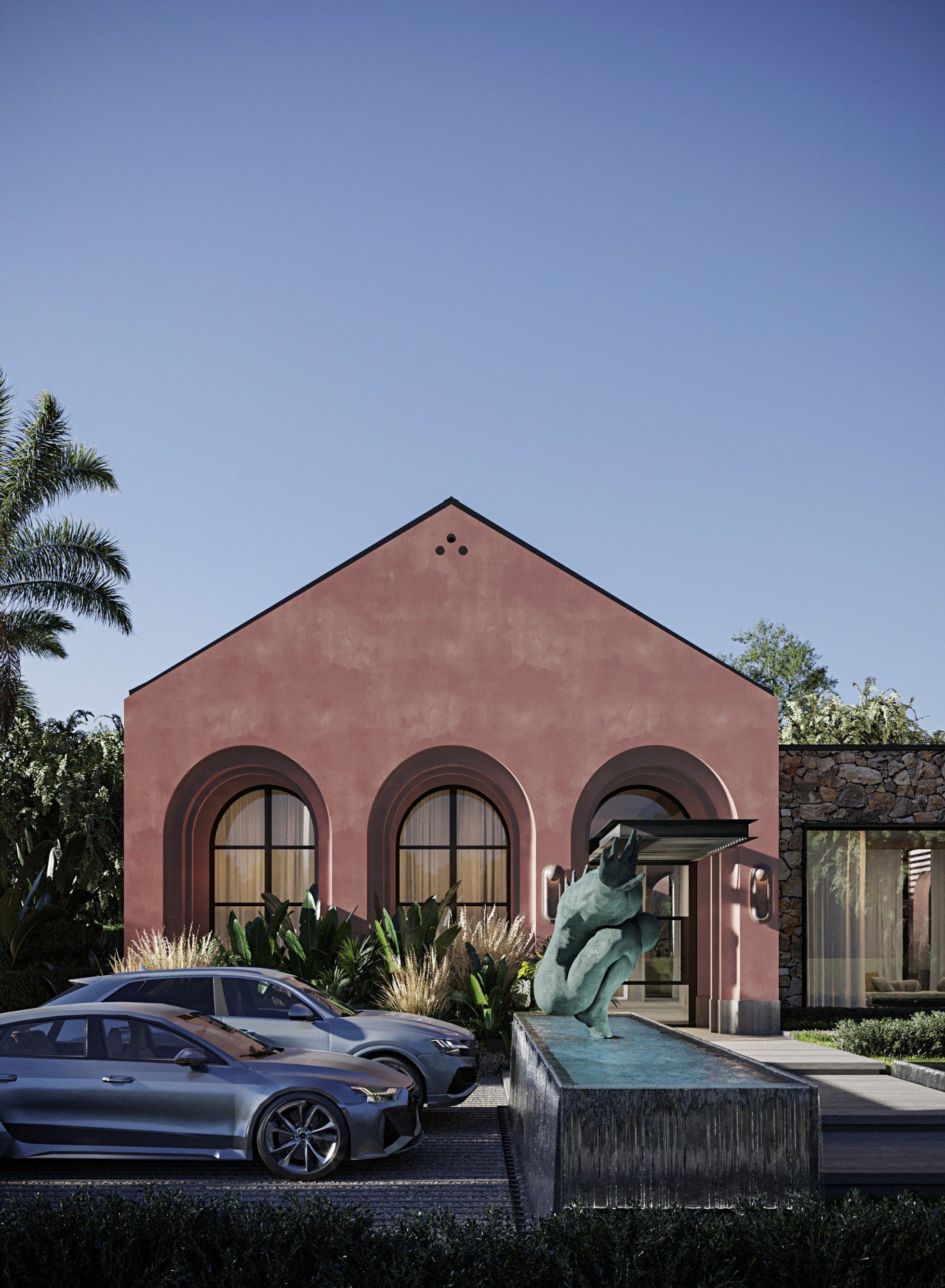
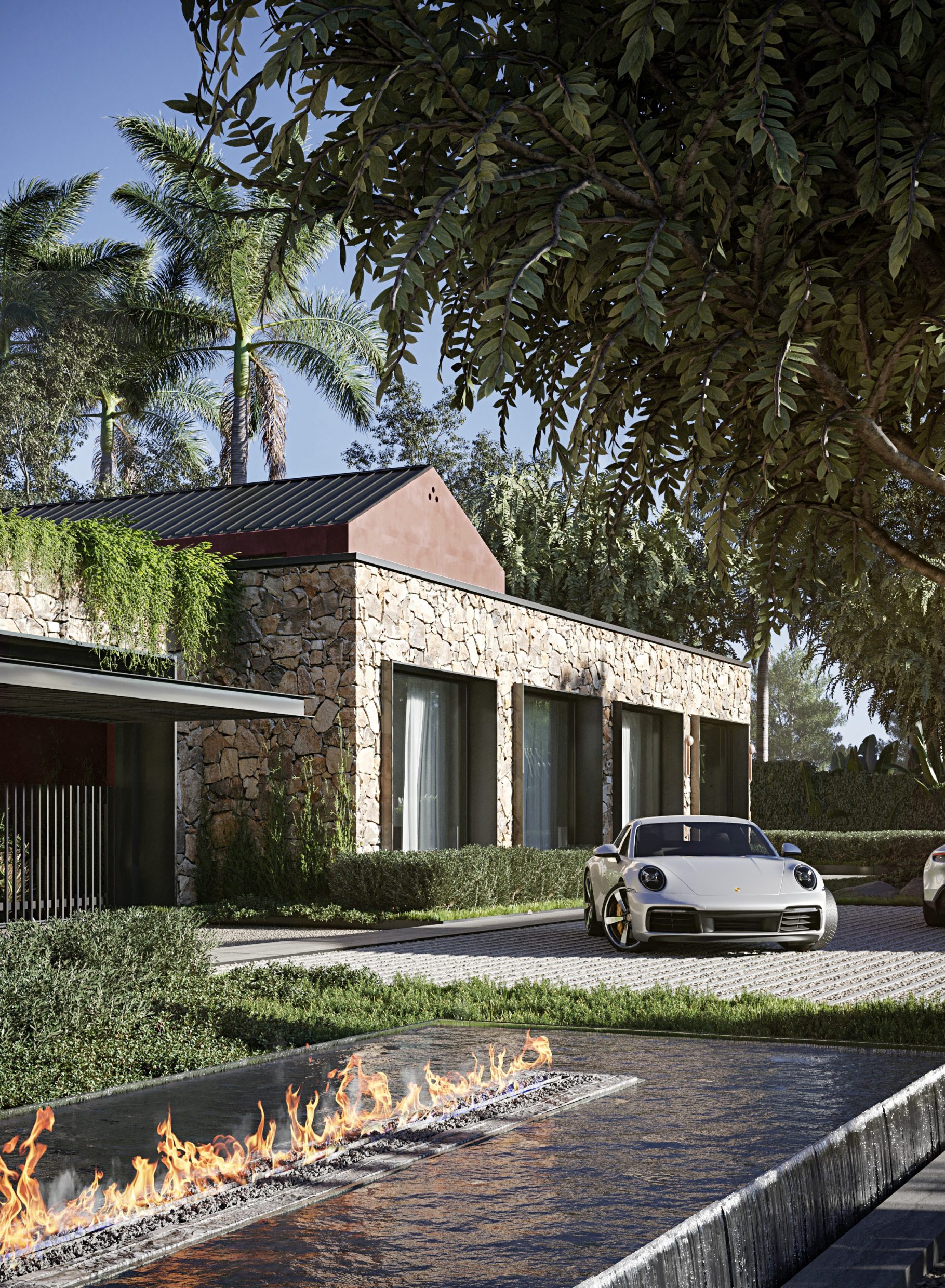
Challenge
The main challenge lies in striking the perfect balance between boldness and harmony. The residence should captivate and surprise, yet remain in harmony with the natural surroundings and traditional Mediterranean design principles. The use of unconventional materials, experimental layouts, and unexpected design elements should have been carefully integrated into the overall composition.
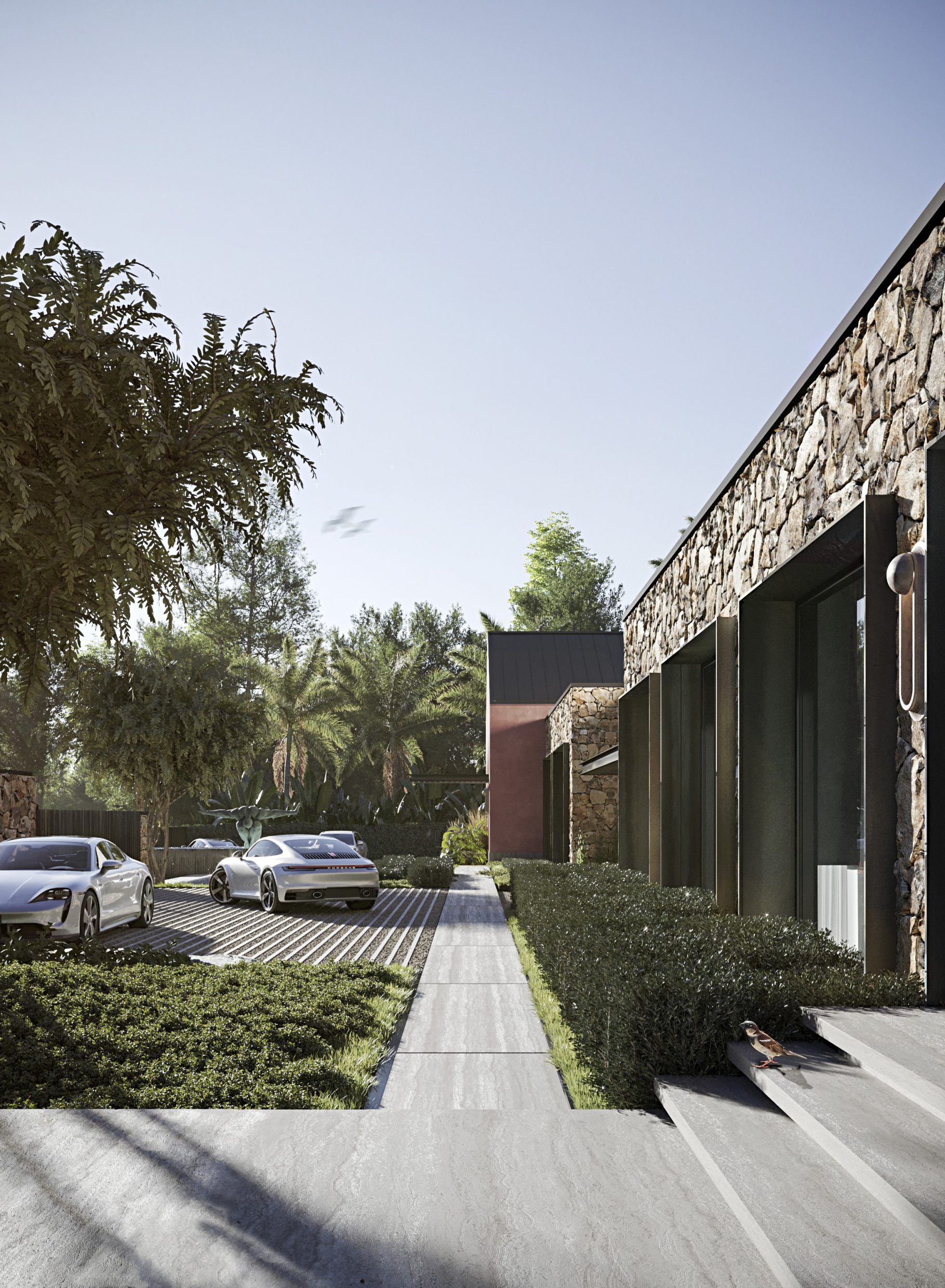
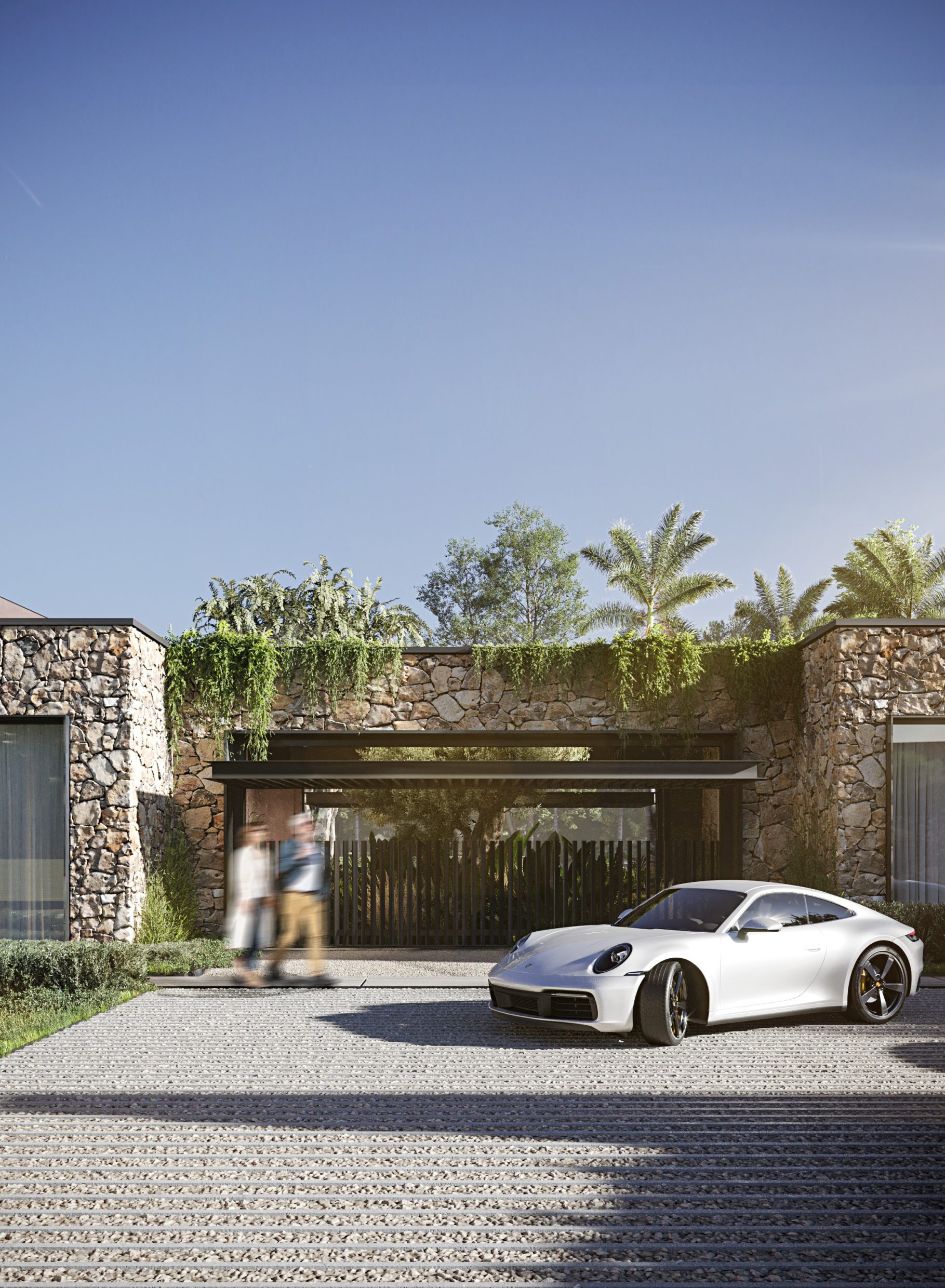
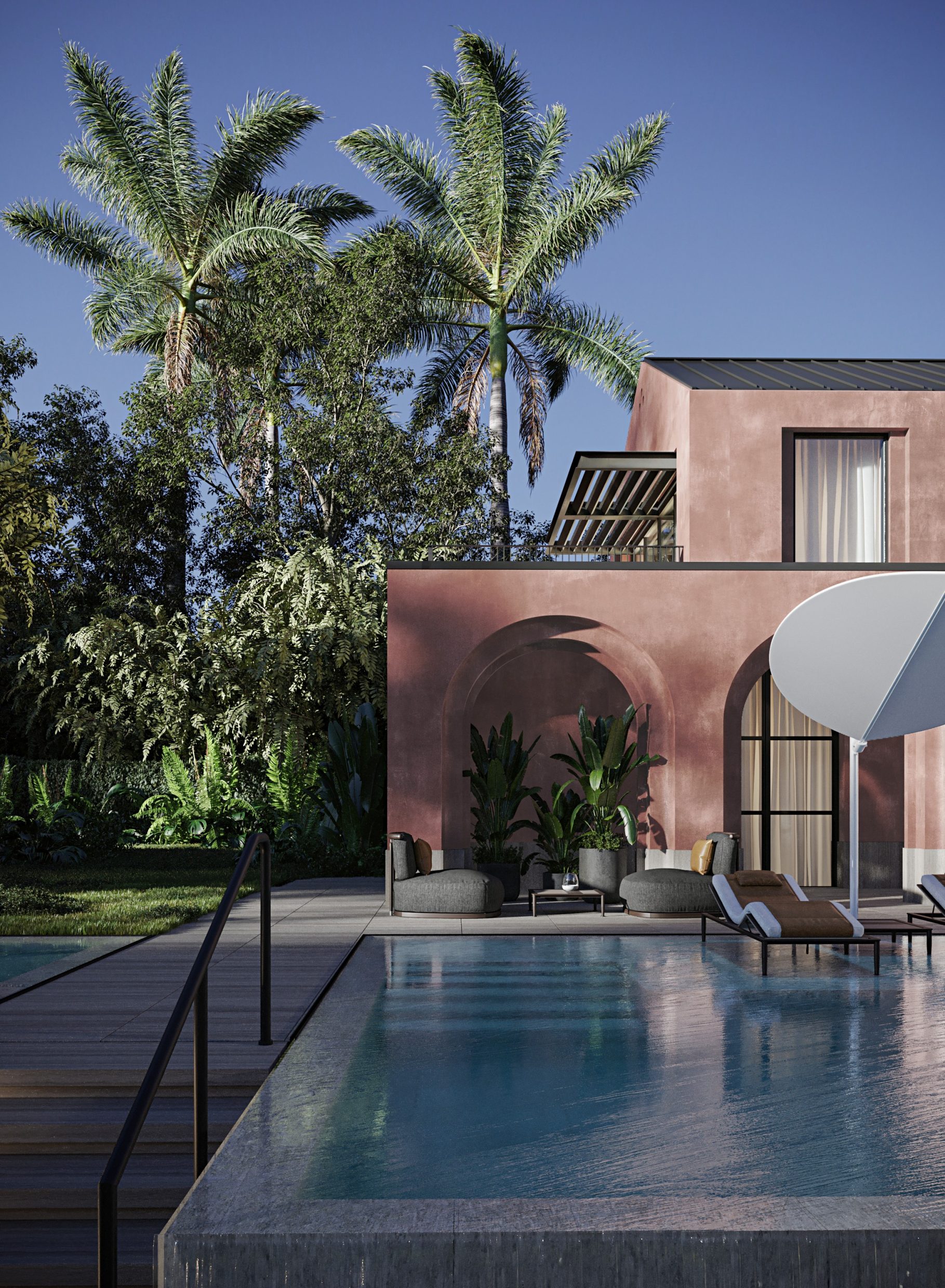
Concept
The core concept of Anemone project revolves around creating distinct sections for the main residence and a guest house, complemented by a dedicated spa area. To accentuate the prominence of the main house, a strategically designed wall has been incorporated in front of the guest house. This wall not only serves as a visual element that conceals the guest house, but also establishes a sense of movement and effectively organizes the space for guest parking.
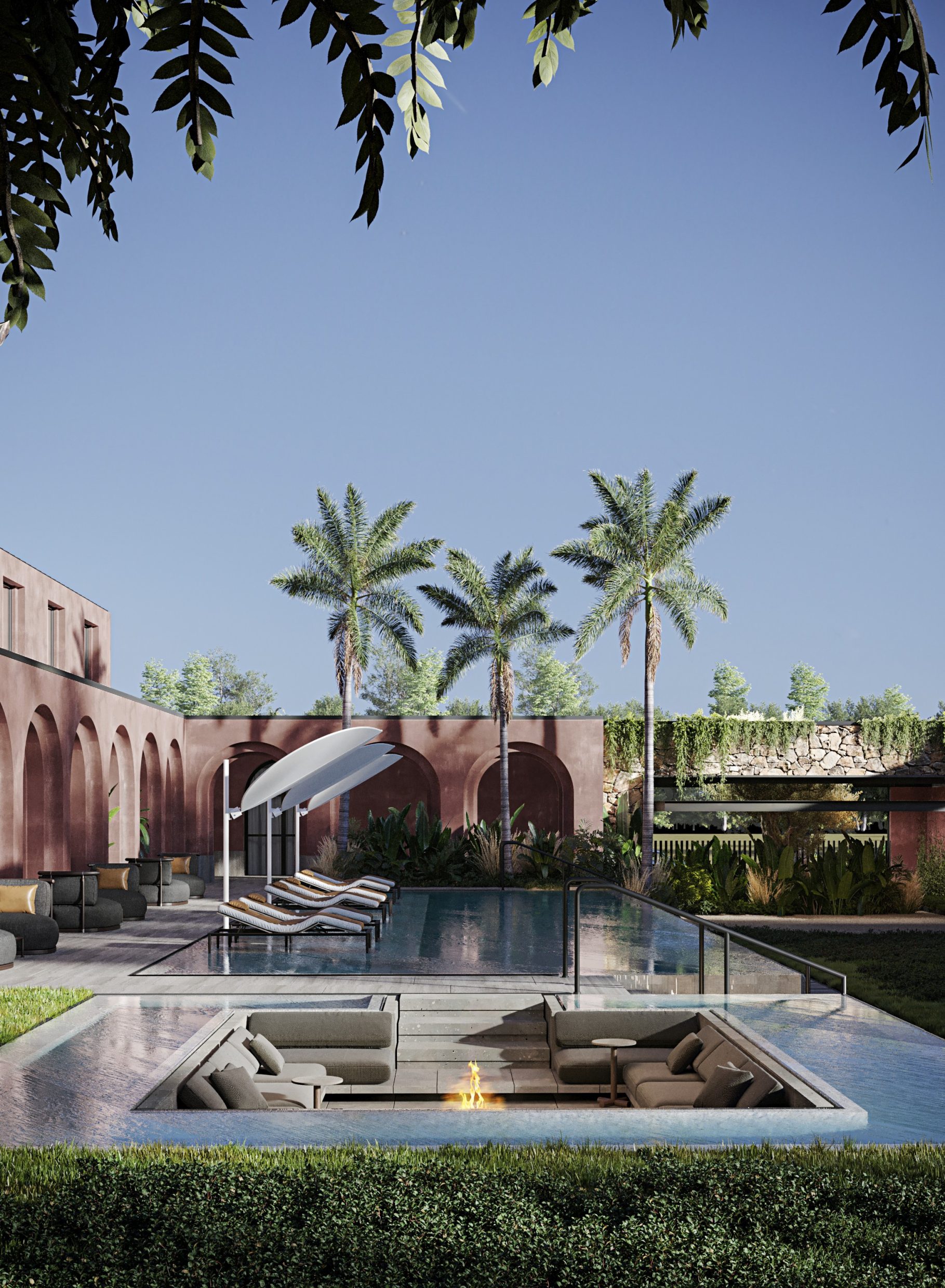
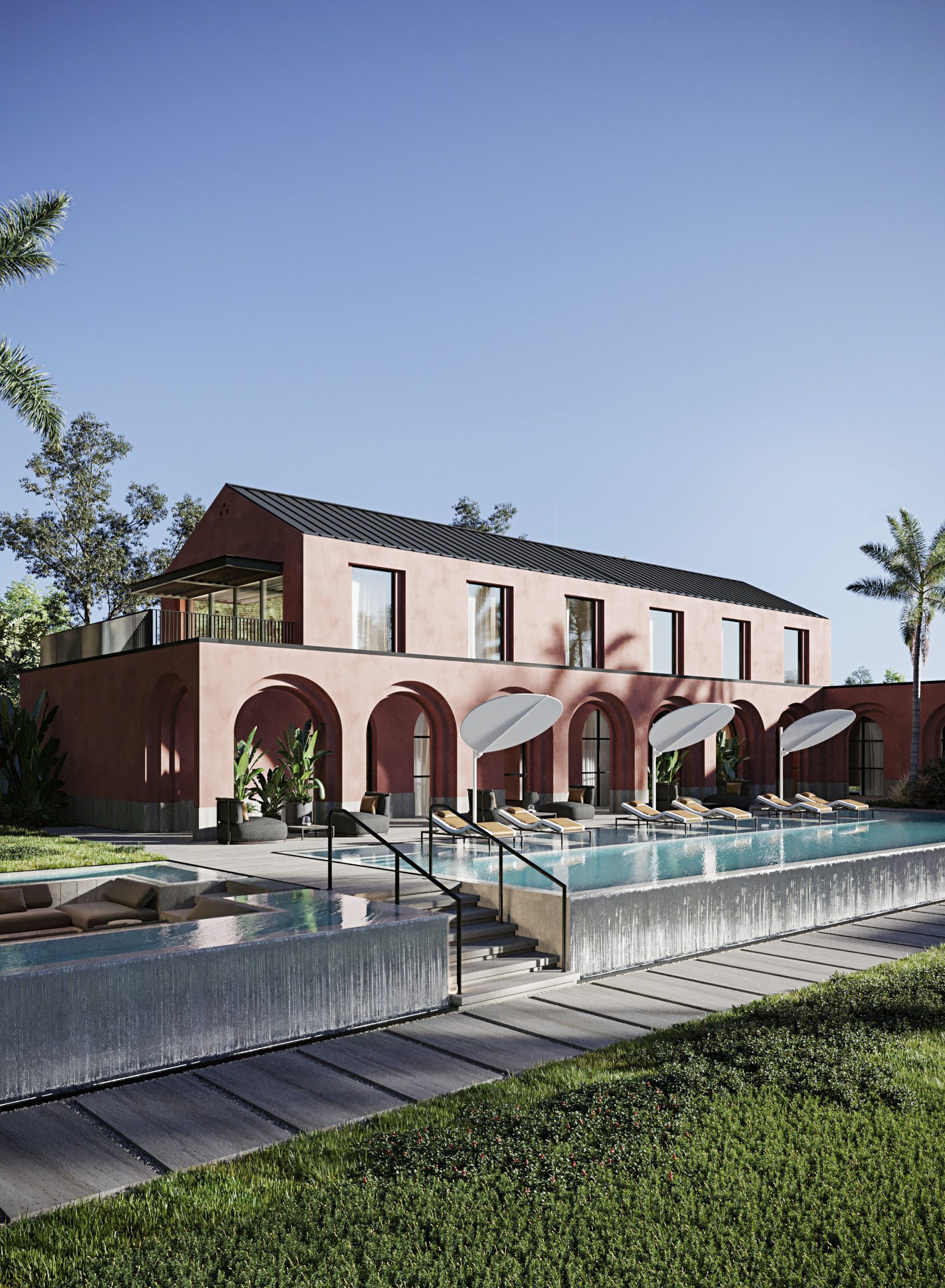
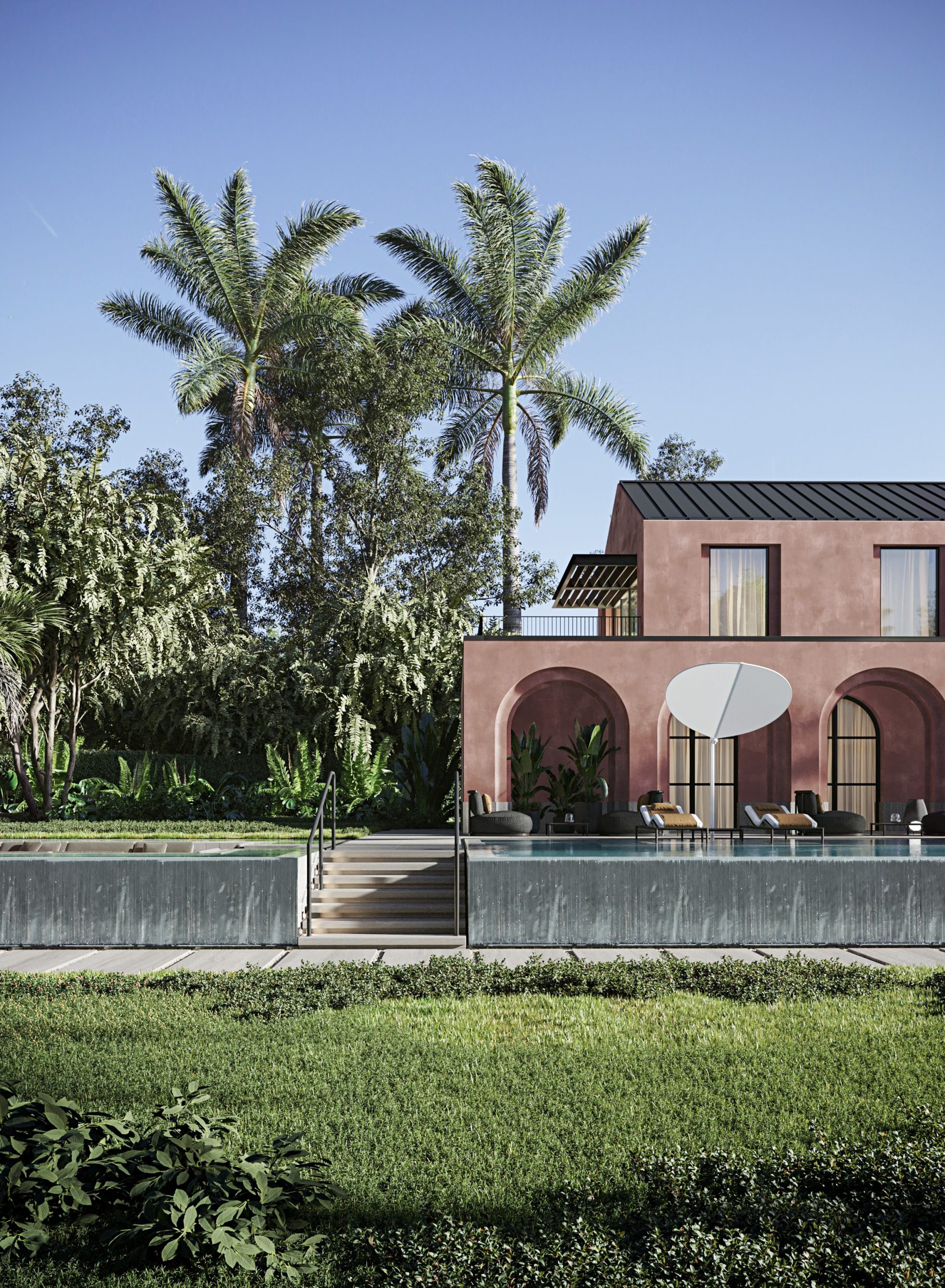
Implementation
YODEZEEN studio’s designers took terracotta plaster, boasting a rich and vibrant hue, as the foundational material for the house’s facade. The plinth is accentuated using travertine, while attention is drawn to the guest house and sunken elements through the use of natural masonry stone. One intriguing aspect of the design lies in the concealed connection between the roof and load-bearing walls, resulting in a seamless and invisible junction.
In order to emphasize the main entrance, two techniques were employed. The first entails an approach, featuring a canopy that gracefully shelters the entrance. The second technique is implemented in the landscape design, utilizing pathways, artistic elements at the entrance, and a consciously placed fire feature to create a sense of movement and visual intrigue.
